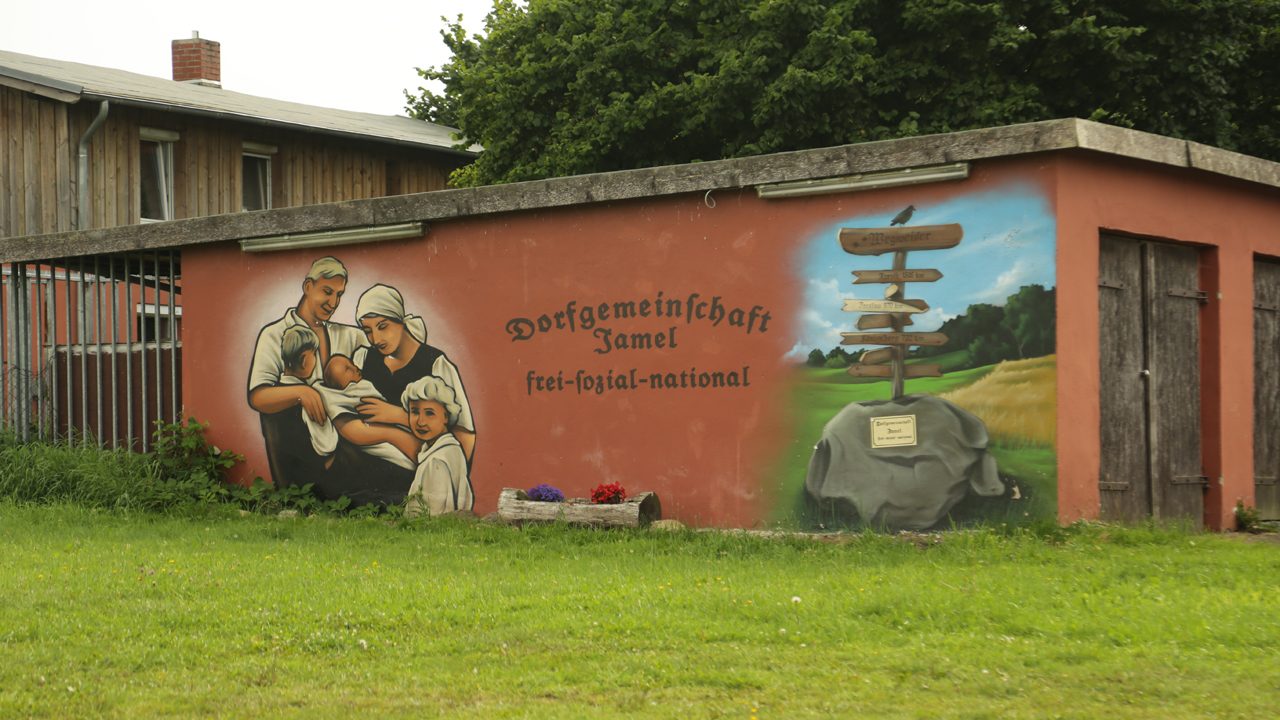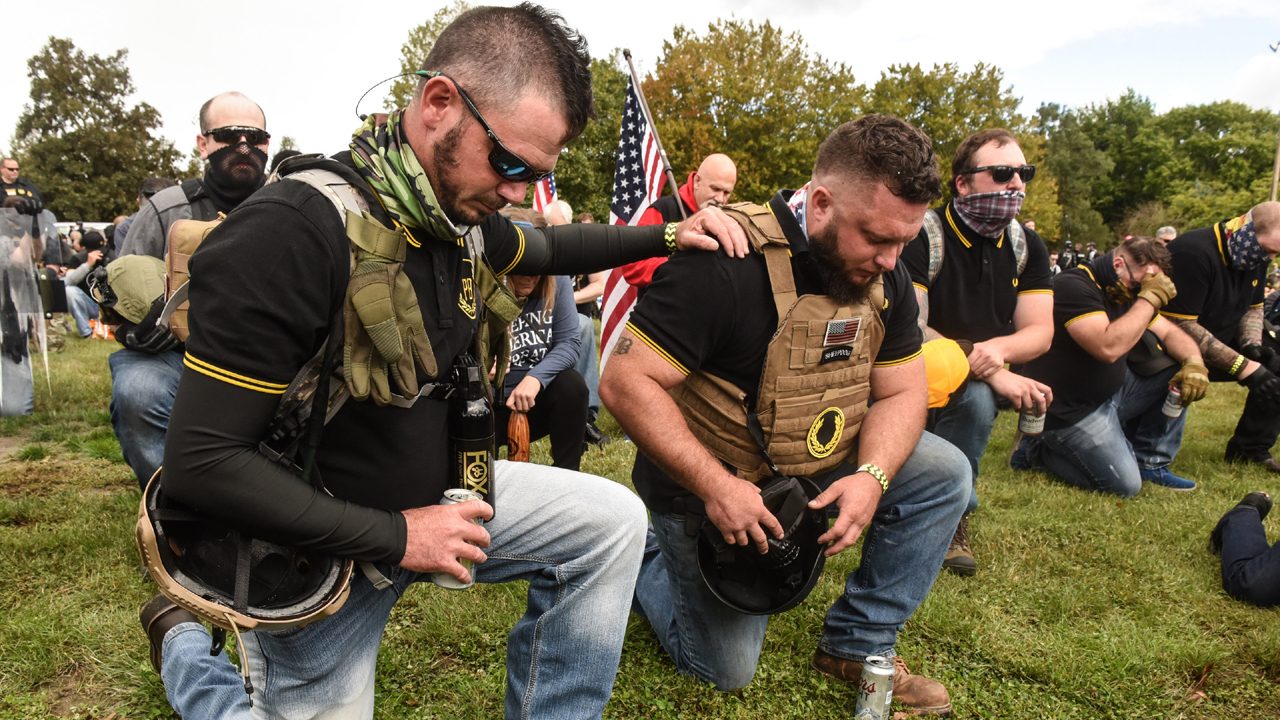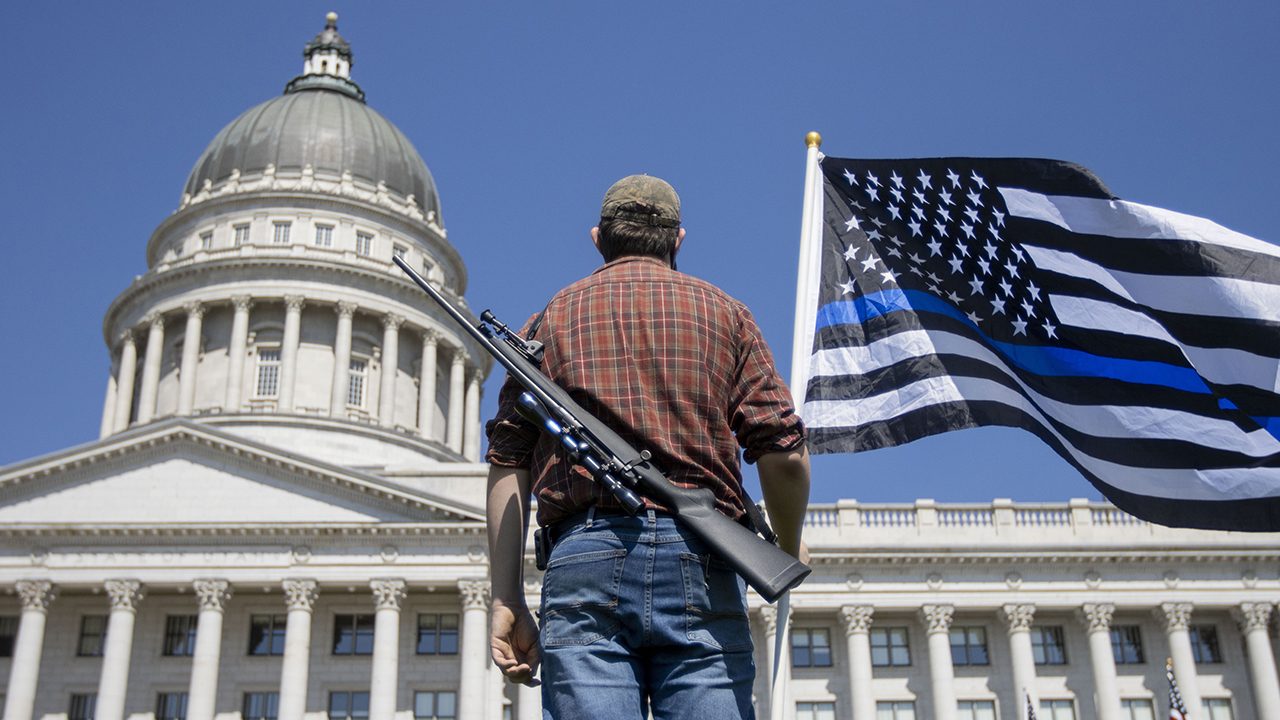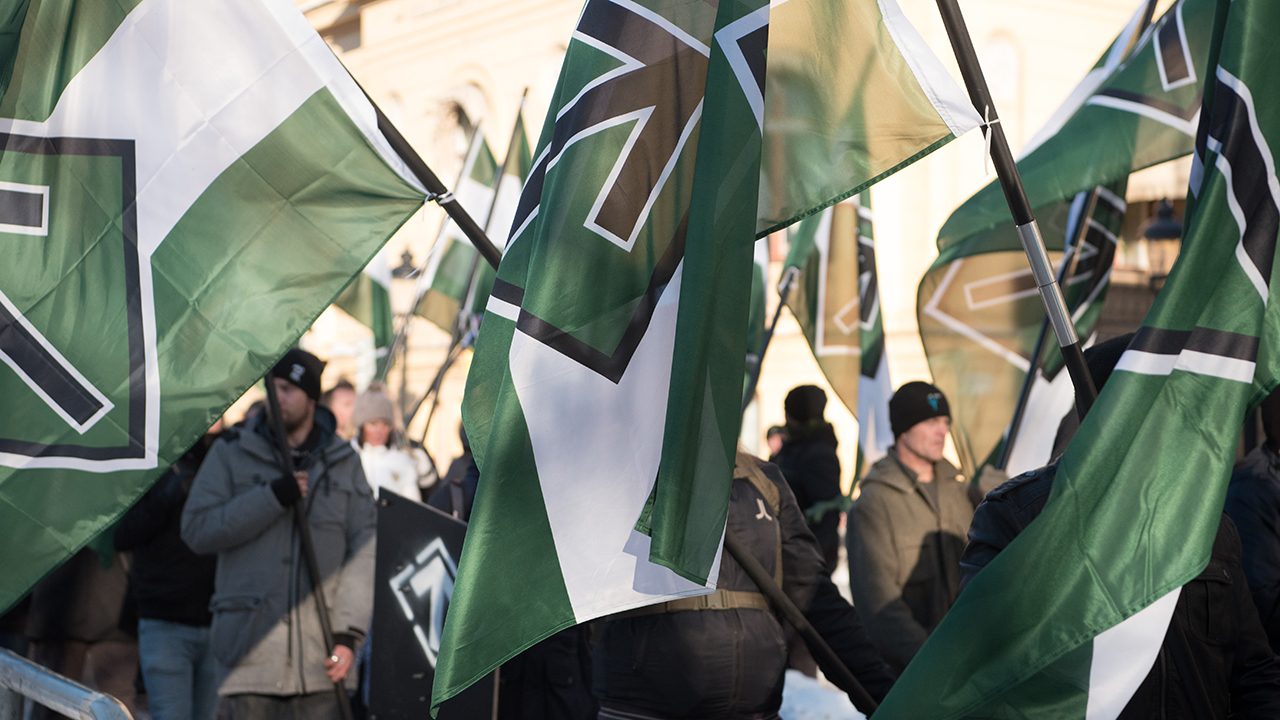
This article was first published in German.
Jyväskylä, 2013: Three neo-Nazis stab a man in the Finnish student city after they are denied entry to an event on right-wing extremism at the city library. Stockholm, 2013: a peaceful anti-racist demonstration in the suburb of Kärrtorp is attacked by 40 armed neo-Nazis. They throw bottles and fireworks at demonstrators. Gothenburg, 2016: Two men carry out a bomb attack on the Syndikalistiskt Forum, a left-wing info store and antifascist hangout. Attacks on two asylum centres follow, one man is seriously injured. Helsinki, 2016: A Finnish neo-Nazi kicks an anti-racist activist to the ground. He dies six days later from head injuries. Oslo, 2019: Two neo-Nazis hijack an ambulance with an Uzi and shotgun and hit passers-by. Jämsä, 2020: Two right-wing extremists visit a local politician of the radical populist-right Finns Party at home and attack him with a hammer. He suffers broken ribs and head wounds. The authorities treat the attack as attempted murder.
Behind all of these attacks lies a pan-Scandinavian neo-Nazi network: the Nordic Resistance Movement, in Swedish Nordiska Motståndsrörelsen, abbreviated as NMR. The movement was founded in Sweden in 1997 by the neo-Nazi Klas Lund as Svenska Motståndsrörelsen, and later renamed to the more-inclusive Nordiska Motståndsrörelsen. Lund was already a well-known face in the Swedish far right – as a leading member of the violent neo-Nazi group Vitt Ariskt Motstånd (White Aryan Resistance).
Since then, chapters of the NMR have emerged in Norway, Finland, Iceland and Denmark, all of which are also called the Nordic Resistance Movement in their respective languages. Internationally, the group is often referred to by the English translation of their name. Their goal: to establish a Nordic neo-Nazi state for “white people”. Countless racist and homophobic acts of violence, attacks, and even some murders against perceived “political opponents” can be attributed to the movement. However, the NMR network is currently in the midst of a crisis: In Finland, the group was banned in 2019, and in Sweden, the movement is now split after a strategic dispute over the political direction of the group. Nevertheless, the NMR remains a very real threat.
“From 2015 to 2019, the NMR had a leading role in the Swedish far-right”, explains Morgan Finnsiö, a far-right researcher at the anti-racist Expo Foundation in Stockholm in interview with Belltower.News. “Their focus on violence, their openly Nazi ideology, their almost bureaucratic organisation, and their prolific propaganda output set the benchmark in the far-right scene.” In 2019, several leading activists including movement founder Klas Lund left the NMR to form the group Nordisk Styrka (Nordic Strength), a self-proclaimed paramilitary “fighting organisation” that is said to be more clandestine, elitist and radical than the NMR. Other new far-right groups have also emerged in Sweden, with a less overtly far-right outward appearance. “Even if these groups challenge the NMR’s monopoly on power, it remains the most dangerous and important far-right actor in Sweden”, Finnsiö concludes.

Propaganda rounds and parliamentary ambitions
Among the NMR’s various activities are the usual far-right hobbies: martial arts training, paramilitary exercises, walks in the woods with their brothers in arms, and marches in uniform. Distributing their propaganda also plays an important role: local chapters of the NMR plan, for example, outings to other towns where they spend hours sticking stickers, handing out leaflets, hanging banners and hoisting flags – all donning the movement’s logo and name. Some of these materials contain threats. One sticker, for example, depicts and a noose with the phrase: “This is what we will do to the traitors of the people”. Anyone who criticises or tries to prevent these far-right promo tours can often expect a violent confrontation.
According to the Expo Foundation, there were 2,801 such propaganda tours in 2018 alone. In 2019, there were 1,658. In addition, the movement organises 125 to 265 demonstrations and rallies annually in Sweden. Expo estimates that there were between 150 and 300 active members of the NMR before the split of the movement in 2019, as well as many other passive members and supporters. There are no official government figures on the size of the movement. “At the height of the movement, the NMR was able to mobilise 600 to 700 people for its demonstrations”, Morgan Finnsiö estimates.
The NMR in Sweden also has parliamentary ambitions: In 2014, two members of the movement were elected on the radical-right party Sweden Democrats‘ ticket in the municipal councils in Ludvika and Borlänge. In 2015, the NMR was registered as a political party. This change of course is thanks to Simon Lindberg, head of the NMR in Sweden since 2015 and a former member of the neo-Nazi party Nationalsocialistisk Front (NSF). However, the movement’s parliamentary breakthrough has so far failed to materialise: In the 2018 general election, the party received 0.03 percent with around 2,100 votes – less than all other splinter parties. This focus on parliamentary politics is also likely to have been one reason for the split of the movement. A year later, after the founding of Nordisk Styrka, the party received only 644 votes in the EU election.
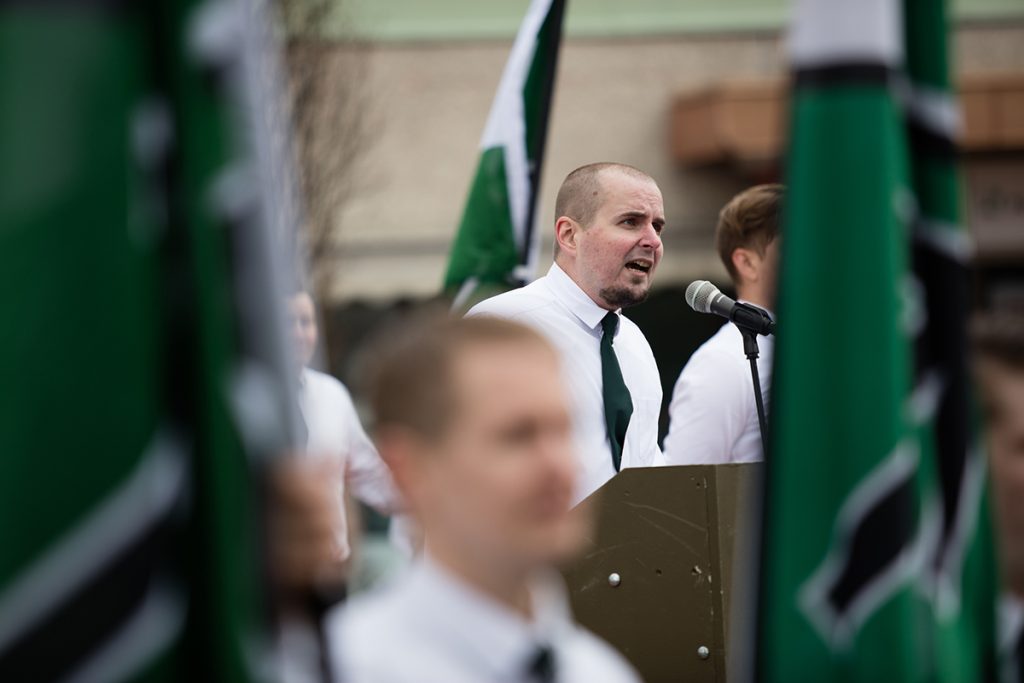
The split may also have ideological reasons, however. Swedish historian, publicist and author of the book Älskade fascism (Beloved Fascism), Henrik Arnstad, describes Sweden as a fertile ground for fascism after 1945. In interview with Belltower.News, he explains: “After World War II, Sweden was one of the few countries where fascists could still meet and organise – for the most part quite openly. As a result, fascism flourished in the country.”
But unlike many nationalist variants of fascism around the world, Swedish fascism is characterised above all by transnationalism: it strives for a pan-European fascist nation. “I call this internationalisation ‘Ikea fascism’”, Arnstad explains. And that’s not just a play on words: Ikea founder Ingvar Kamprad was an active member of the fascist organisations Nysvenska Rörelsen (New Swedish Movement) and the neo-Nazi party Svensk Socialistisk Samling (Swedish Socialist Union), the successor party to the Nationalsocialistiska Arbetarepartiet (National Socialist Workers’ Party).
Too extreme for Hitler
Although Hitler is also idolised to some extent in the Nordic Resistance Movement, he is also seen as a loser, Arnstad explains. “He ultimately lost the war, then killed himself.” Rather than the NSDAP, the Romanian fascist Iron Guard movement led by Corneliu Zelea Codreanu serves as inspiration for the NMR. “Both movements use the colours green and white, both organise in so-called ‘nests’”, Arnstad notes. “The Iron Guard was even more antisemitic than the NSDAP. Hitler called them radicals; their antisemitism was even too extreme for him.” The cult of personality around Codreanu is also attractive for the NMR: “He died a heroic death: he was executed by the Romanian government in 1938 and is seen as a ‘saint’”.
This fascination with Romanian fascism speaks for a certain intellectualism among the NMR, according to Arnstad. “They are well-read and knowledgeable when it comes to history. In their magazine Nordfront, there are often very elaborate and informed discussions regarding the different brands of fascism. They even praised my book because I have apparently understood their ideology.” Arnstad, however, also sees their focus on far-right theory as a possible reason for the movement’s split: “Supporters of Nordisk Styrka may also have seen the Nordic Resistance Movement as too intellectual and academic.”
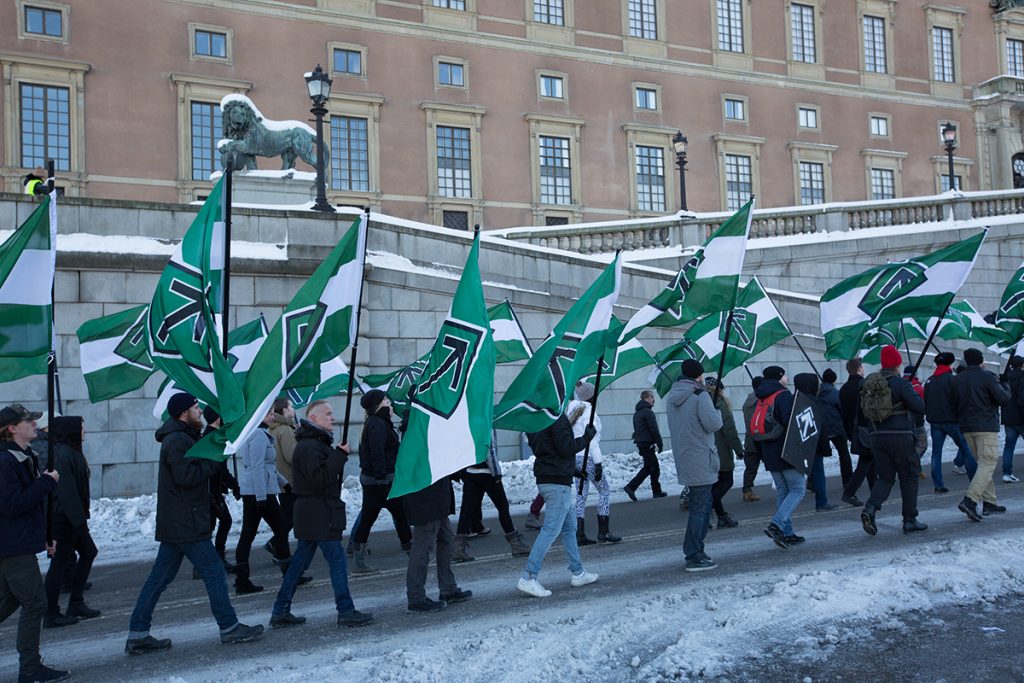
But the pan-Scandinavian ideology of the NMR also has its limits: parts of the Swedish movement don’t see their Finnish comrades-in-arms as equal Aryans, but as “ethnic hybrids” who do not belong to Scandinavian culture. This attitude, in turn, leaves traces in the ideology of the Finnish chapter of the movement. Oula Silvennoinen, a historian at the University of Helsinki who studies right-wing extremism in Finland, explains in interview with Belltower.News: “This is another reason why the NMR in Finland doesn’t attach such great importance to a future Nazi state in Scandinavia. They also communicate only in Finnish, although Swedish is also a second official language in the country.” Still, the group has close ties with their Swedish counterparts. But there are also differences in political strategy: the Finnish offshoot thinks little of the parliamentary ambitions of its Swedish brethren.
Oula Silvennoinen estimates the Finnish NMR chapter has between 200 and 400 members. “The movement in Finland is definitely smaller and less influential than in Sweden”, he says. The head of the Finnish NMR is Antti Niemi, a less charismatic and media-friendly leader than his Swedish counterpart Simon Lindberg. But that doesn’t make the Finnish NMR any less dangerous: the Israeli embassy in Helsinki has been vandalised more than 20 times since 2017 by neo-Nazis with swastikas, images of Hitler and NMR stickers. According to the public broadcaster Yle, two-thirds of the members of the Finnish NMR have already been sentenced for violent crimes.
Friends abroad
One of the greatest achievements of the movement in Finland has been the so-called “612 March” – an annual nationalist march in Helsinki on Finnish Independence Day. The demo route ends at Hietaniemi Cemetery, where a monument to the Finnish Volunteer Battalion of the Waffen SS is located. Before the covid-19 pandemic, the demonstration used to attract up to 3000 participants annually. It functions as a meeting place for the far-right scene: not only Scandinavian neo-Nazis from the NMR and the Soldiers of Odin attend, but also international right-wing extremists, for example from the UK, Greece and Germany, flock to Helsinki for the demonstration.
Internationally, the Nordic Resistance Movement is extremely well connected: According to the broadcaster Yle, between 2011 and 2017, around 20 members of the movement were users of the international neo-Nazi forum Iron March. Here, the NMR came into contact with neo-Nazi parties such as Chrysi Avgi (Golden Dawn) in Greece and Casa Pound in Italy, but also with far-right terrorist groups such as the now-banned National Action in the United Kingdom.
In 2015, members of National Action visited the Finnish chapter of NMR. In a blog entry on the British terror group’s website, which has since been taken offline, the head of National Action, Benjamin Raymond, describes a lengthy stay in Finland: He stayed in one of the movement’s shared apartments, gave a speech at Koti, which since 2012 has been the headquarters of the Finnish NMR in the city of Turku, and took part in the group’s hikes. In a photo in Helsinki with members of the NMR, Raymond can be seen posing with an assault rifle. He praises the organisation, discipline and “community feel” of the Swedish and Finnish NMR chapters, as well as mentioning other international comrades from Greece who had also travelled to Finland. The British-Finnish Mikko Vehvilainen, formerly a sergeant in the British Army, has also served as an important link between the two groups: He was a member of National Action and the Finnish NMR before being sentenced to eight years in prison in 2018 for his membership in National Action.
The NMR also has links to the Ukrainian Azov Regiment: The far-right podcast “FashCast” published an interview between a member of the Finnish NMR and Olena Semenyaka, the so-called “First Lady” and spokeswoman of the far-right paramilitary volunteer battalion in Ukraine. In the interview, Semenyaka mentions a “foreign legion” in Ukraine that international volunteers could join, as well as military training camps at the Azov camp in eastern Ukraine. A delegation of the Finnish NMR visited the Azov Regiment in Kyiv in 2019.
That’s not to say, however, that the NMR as a whole is partisan in the Ukraine conflict: Two members of the Swedish NMR, who were responsible for the series of bombings in Gothenburg in 2016 and 2017 mentioned at the beginning of this article, participated in a training camp organised by the far-right paramilitary and pro-Russian Russian Imperial Movement in 2016 in eastern Ukraine, which fought against Ukrainian forces – including the Azov Regiment.
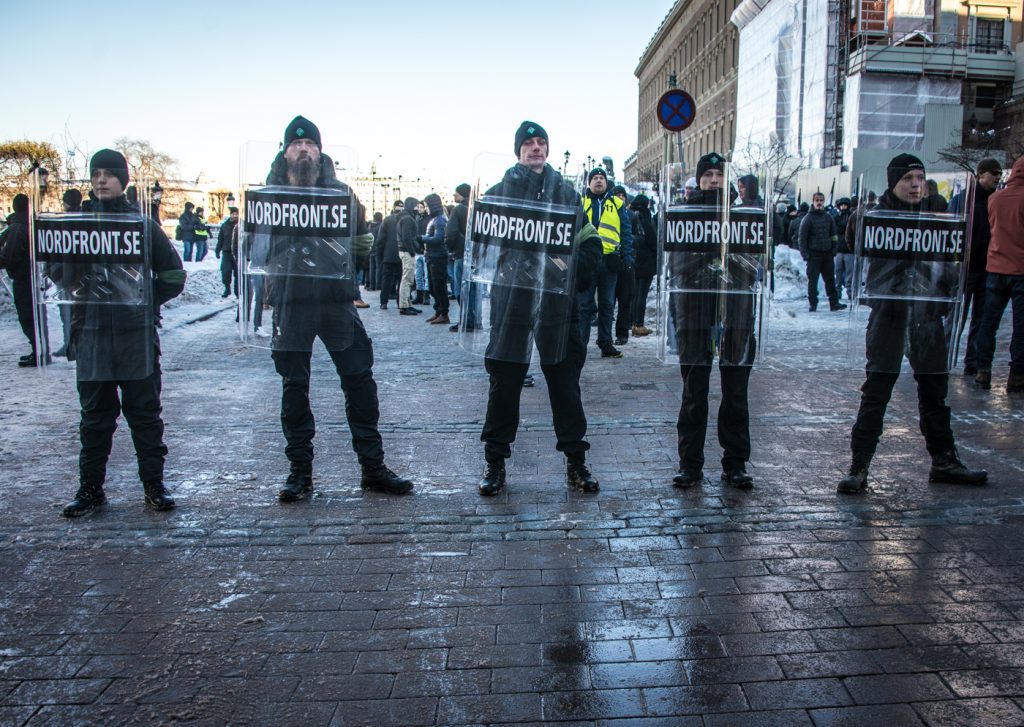
In Germany, the neo-Nazi party Der III. Weg (The Third Way) is an important partner for the NMR. Members of the NMR have visited their far-right friends in Germany several times: At a demo of Der III. Weg in the Berlin district of Hohenschönhausen on October 3, 2020, Fredrik Vejdeland, a leading figure of the Swedish chapter, gave a speech in German. In Würzburg in 2017, NMR leader Simon Lindberg spoke at one of the party’s demonstrations.
The exchange has been mutual, with members of Der III. Weg also travelling to Finland: In 2019, party founder Klaus Armstroff visited the head of the Swedish NMR, Simon Lindberg, in Helsinki. Together with a delegation of his fellow party members, Armstroff took part in the “612 March” on Finnish Independence Day. Holiday snaps from their Helsinki trip are even on the party’s website: The delegation visited a tank museum and the Finnish-German military cemetery. There also appear to be links between the NMR and the Junge Nationalisten (Young Nationalists, JN), the youth organisation of the German far-right party NPD. In 2017, the JN also participated in the “612 March” in Helsinki.
Despite the successes of the NMR so far across Scandinavia, the future of the movement is uncertain. In 2019, the Finnish NMR suffered a major setback after they were banned by the Supreme Court. In September 2020, the ban was upheld by the court. How successful the ban will be, however, remains to be seen. The historian Olena Silvennoinen is sceptical – with good reason. The very day after the ban, the Finnish NMR held a demonstration in Tampere, southern Finland. The green and white flags were the same as always, only the logo of the now-banned group was missing. “To observers of the far-right scene, it was completely clear that this was the NMR marching”, Silvennoinen says frustratedly. Even before the court ruling, the Finnish NMR formed several new organisations with different symbols in case of a ban – such as Suomi Herää (Finland Wake Up), Kohti Vapautta (Towards Freedom) and Kansallisradikaalia Toimintaa (National Radical Action).
In Sweden, the split of the NMR has also weakened the group, but the newly formed Nordisk Styrka is considered more violent, more radical and operates underground. As right-wing extremism researcher Morgan Finnsiö sums up: “Even though the NMR appears to be in decline, it is still the most important and dangerous far-right actor in Sweden. But it remains an open question whether they will manage to adapt and retain their position of power on the far right.” Current trends in Sweden and Finland point to an end of an exportable “Ikea fascism” in Scandinavia. But even from the underground, the movement will continue to foster its close international ties
The photo by Frankie Fouganthin was published under the Creative Commons Licence CC BY-SA 4.0.
